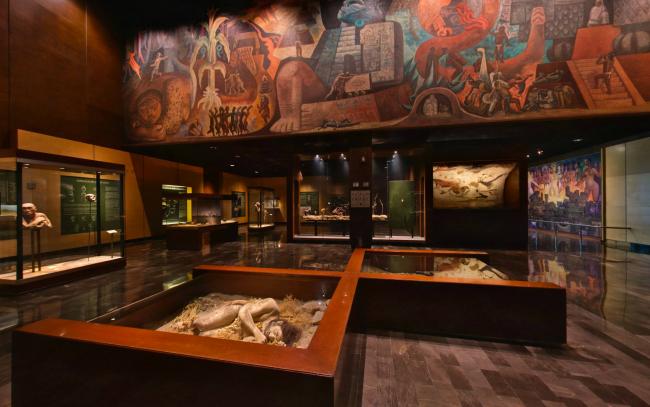
Introduction to Anthropology
At the museum’s inauguration, this gallery was named "Introduction to Anthropology", but during a recent renovation it became known as the "Origins Hall".
Some halls require more interpretive elements than others, depending on the available collection. For the Origins section, which had relatively few artifacts, additional interpretation was provided through paintings, illustrations, and dioramas.
The room features murals by José Chávez Morado on Mesoamerica, Jorge González Camarena on mestizaje, and Iker Larrauri on the migration of humans into the Americas from Asia.
A notable example of the museum’s original curatorial vision is the recreated archaeological excavation of the Tepexpan Man discovery. Rather than displaying it at floor level, it was presented below the gallery level to replicate the conditions in which the find was made, immersing visitors in the discovery experience—a technique also used in the Ethnography Halls.
To convey the scale of prehistoric fauna, Iker Larrauri painted a mural showing these animals at full size. The corresponding diorama shows Tepexpan Man in a survival encounter with mammoths. The contrast between the life-size mural and the miniature diorama gives it didactic value beyond that of a simple model. The diorama, notable for its realism and created over 40 years ago under the direction of sculptor Carmen Antúnez, was crafted onsite during the museum's construction. Its cyclorama background, made of plastic, was among the first of its kind produced in Mexico. The artists were even sent to the United States and Italy for training.
Curators worked closely with scientific advisors to visually interpret the narrative, following specific guidelines and using selected tools. To maintain coherence, the curators, architects, and advisors held regular meetings to align their decisions. The scientific advisors, deeply familiar with both exhibited and stored collections, determined which objects best illustrated key concepts and how to present them. Their curatorial script guided the spatial and museographic design.


